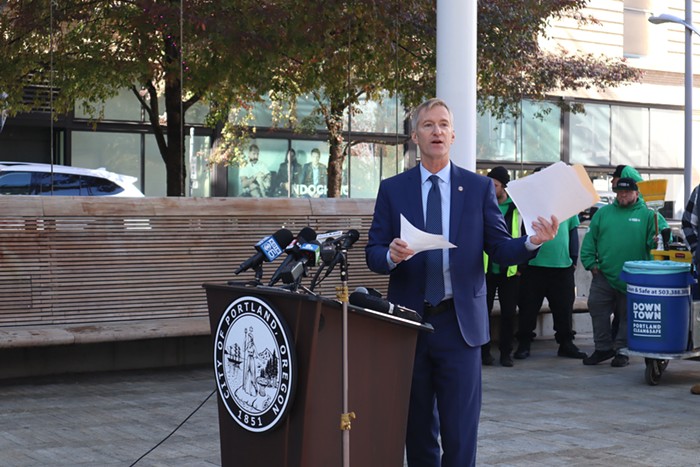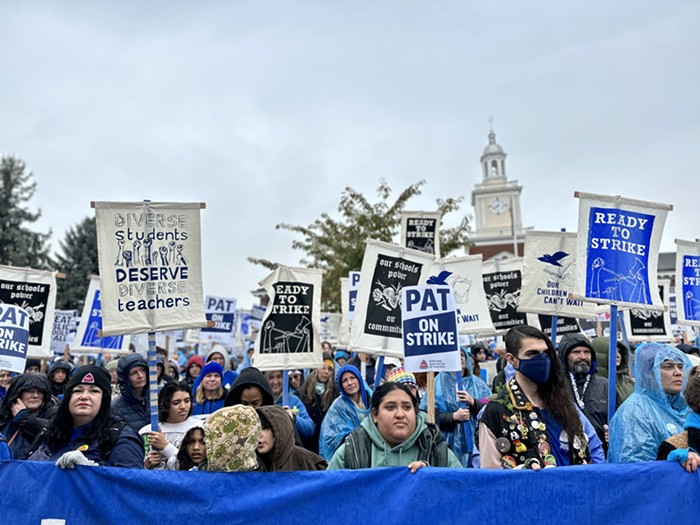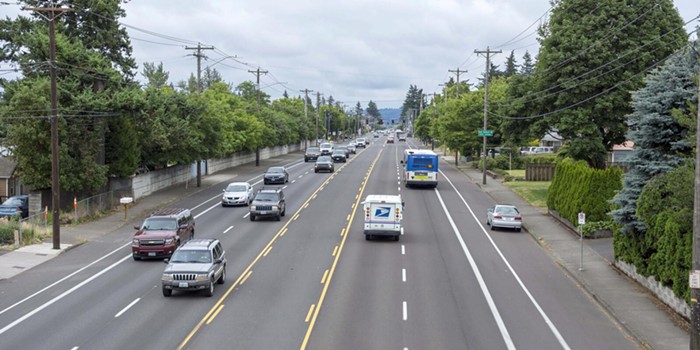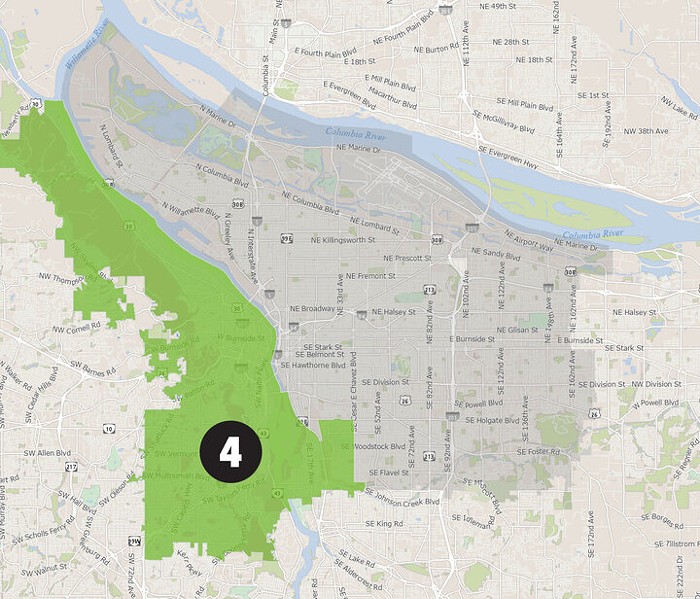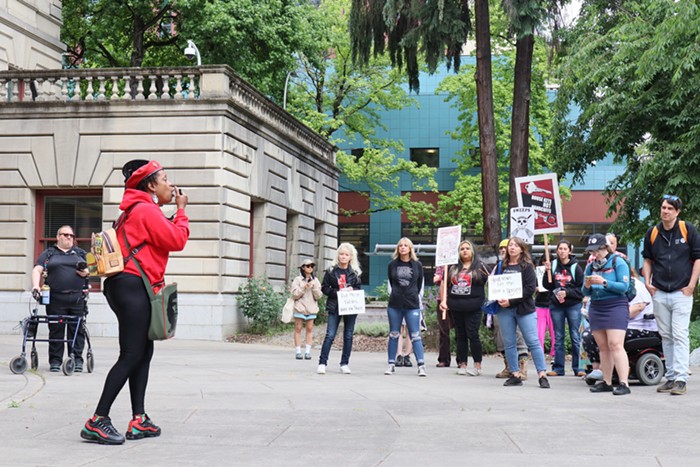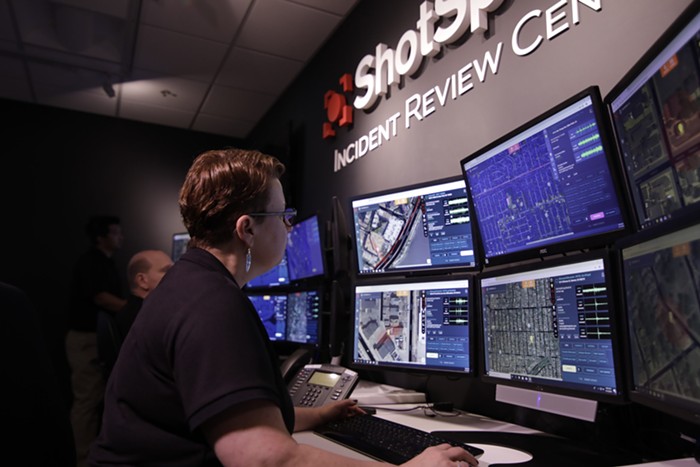
- Endless Canvas
- There goes the neighborhood: An outdoor "street art mural" in the controversial Railyard show.
The city has been stepping up graffiti abatement in recent years, in part due to Commissioner Amanda Fritz, who runs the Office of Neighborhood Involvement and spends her free time removing graffiti while she waits for the MAX. But a few years before Fritz's election, city council passed a law requiring stores to get ID for spray paint purchases and record every spray paint sale in massive logbooks. This year, the city spent $158,000 to created a new graffiti abatement position in the Portland police bureau (doubling the size of the police's graffiti abatement team) and a graffiti removal volunteer coordinator job. The current city budget put $409,000 in one-time funds into graffiti removal, part of which pays for a summer youth crew to paint over graffiti around the city. At the time of the crackdown on the Railyard, the neighborhood around the gallery was under police watch as a graffiti "hot spot."
Is all this investment worth it?
I had an interesting conversation this morning with PSU Professor Hunter Shobe, a geographer who studies street art. Graffiti enforcement is an issue that's becoming more difficult in cities across the country. Some graffiti are tags connected to gang activity, some are political statements, and some art pretty pictures. But Portland's approach to graffiti is similar to essentially every city in the United States: a zero tolerance policy. This is in part due to the broken windows theory that graffiti in any form creates an area that's more ripe for other kinds of vandalism. Paid and volunteer graffiti abatement teams aim to paint over all graffiti in 24 hours, whether it's shitty spray painted tags on murals or legitimately interesting art.
Portland's crime mapping database doesn't separate out "graffiti" from other vandalism crimes, but inner Southeast Portland (where the Railyard is located) has had 556 complaints of vandalism this year, the most of anywhere in the city.
Many cities in Europe (like Berlin) are more laid back about street art. The Legal Walls website for graffiti writers, for example, lists only 75 graffiti legal walls in the United States, but 816 around Europe. In the US, while graffiti is finding appreciation in the mainstream (you don't get any more mainstream than street artist Shepard Fairey creating the iconic image of a presidential campaign) but it remains a crime.
"On the one hand there seems to be increased attention on trying to crack down on this, but you see increased acceptance of street art within the art world and more gallery shows," says Shobe.
The controversy over whether the street art show at Railyard contributed to illegal graffiti in the citywide is similar to issues around the the Los Angeles Museum of Contemporary Art recent high-profile street art show, which attracted 201,000 museum-goers but also led to an uptick in graffiti in the area, according to LA police. So there's this interesting conflict: Inside a gallery, graffiti can be a modern art form worth the $10 ticket price. Outside, it's vandalism and a blight on neighborhoods.
